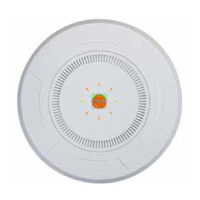Wireless Access Point
268 Configuring the Wireless AP
The read-only Limits section of the SSIDs window allows you to review any
limitations associated with your defined SSIDs. For example, this window shows
the current state of an SSID (enabled or not), how much SSID and station traffic is
allowed, time on and time off, days on and off, and whether each SSID is
currently active or inactive.
For information to help you understand SSIDs and how multiple SSIDs are
managed by the Wireless AP, go to “Understanding SSIDs” on page 268 and the
Multiple SSIDs section of “Frequently Asked Questions” on page 520. For a
description of how QoS operates on the AP, see “Understanding QoS Priority on
the Wireless AP” on page 270.
SSIDs are managed with the following windows:
“SSID Management” on page 276
“Active IAPs” on page 297
“Per-SSID Access Control List” on page 298
“Honeypots” on page 299
“Personal Wi-Fi” on page 301
SSIDs are discussed in the following topics:
“Understanding SSIDs” on page 268
“Understanding QoS Priority on the Wireless AP” on page 270
“High Density 2.4G Enhancement—Honeypot SSID” on page 274
Understanding SSIDs
The SSID (Service Set Identifier) is a unique identifier that wireless networking
devices use to establish and maintain wireless connectivity. Multiple access points
on a network or sub-network can use the same SSIDs. SSIDs are case-sensitive
and can contain up to 32 alphanumeric characters (do not include spaces when
defining SSIDs).
Multiple SSIDs
A BSSID (Basic SSID) refers to an individual access point radio and its associated
clients. The identifier is the MAC address of the access point radio that forms the

